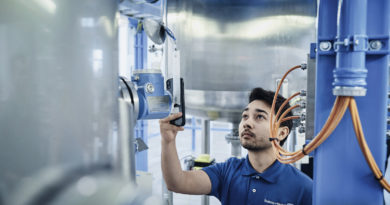Pratley Analytical offers unique in-house and third-party testing service
A significant investment in its two testing laboratories has not only allowed Pratley to guarantee the quality and performance of its world-class products, and constantly develop new products, but also to offer a third-party analytical service to industry.
Pratley Analytical is an autonomous micro-analytical division within Pratley. It is differentiated from most other analytical laboratories, which run large sample sets through standard machinery, by its capability to carry out more in-depth investigative-type analysis, mainly of specialised geological samples, for example.
In addition, it also focuses on metallurgical analysis. However, its extensive range of equipment, up-to-date sample database and the latest software gives it the flexibility to analyse virtually any samples, Pratley CEO Kim Pratley points out.
The inorganic chemistry laboratory has two scanning electron microscopes, with one set-up mainly for imaging and the other for analysis, in conjunction with an Energy Dispersive Detector (EDS). Here the wavelengths of X-rays from specific points on a sample can be identified as particular elements. A third machine, an Electron Super Probe, is used to carry out more-intensive analysis, especially where elements lighter than carbon are involved, based on a Wave Dispersive System (WDS).
Pratley Analytical also boasts a comprehensive optical microscopy section with six optical microscopes that use both reflected and transmitted light to determine aspects of crystallography such as birefringence. These high-end optical microscopes are also fitted with camera attachments. Powder-form samples, on the other hand, are analysed using an X-ray diffraction machine that compares the crystallography to a comprehensive database.
In addition to third-party work for mining and geological exploration companies, Pratley Analytical also provides an in-house service for its own R&D division, as well as providing the necessary Certificates of Analysis (COAs) required for the zeolite it supplies to the nuclear industry, for example. This is also a specific requirement in the food and beverage and animal feed industries, which need the assurance of invariant samples.
An Inductively Coupled Plasma machine can examine dissolved or aqueous samples, especially where minute quantities such as parts per billion are required to be detected. The sample is fed through a flame to produce an optical spectrum that is subsequently analysed for the entire periodic table. On the other hand, an Atomic Absorption Spectrometer can isolate one element at a time.
The division has numerous other capabilities like core splitting, magnetic separation, density separation, and sample preparation. “Our extensive equipment and highly trained scientific staff provide us with a significant analytical capability,” Pratley notes. The division is also involved in quality assurance and analysing raw materials, and is headed up by Allan Arnold, a global expert in X-ray microanalysis.
While the demand for third-party work has dropped off due to a decline in exploration activity in the mining industry, Pratley reveals that its internal use of the division is ramping up significantly, particularly in its pursuit of innovative new products and market segments.




